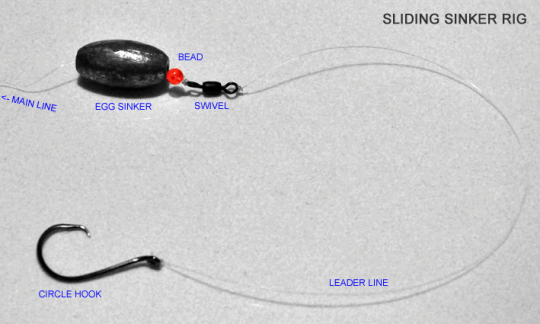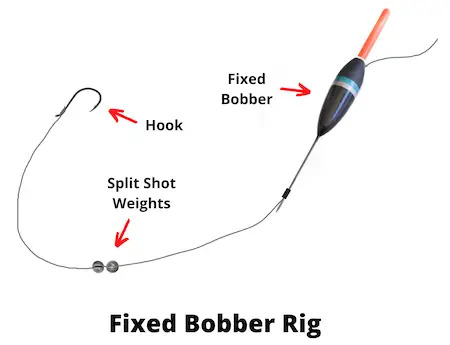#I personally recommend salmon meuniere but it also makes great fish tacos
Explore tagged Tumblr posts
Text
Trout fishing for beginners on a budget!
Do you ever look at salmon fillets in the supermarket and water at the mouth but find the price far too high? Well this guide is for you! I tried to keep this guide fairly short and to the point so if you need more info, feel free to ask.
Reasons to fish for trout:
Trout taste quite similar to salmon, a fish that's typically unaffordable expensive even here in the PNW (I find trout to be better because they're much more mild and don't overcook as easily, ymmv)
They can be caught without a boat and you don't need an expensive set up.
Fishing licenses fund conservation!
It's fun and allows you to see where your dinner is coming from, from start to finish.
Before you start: Get your fishing license. You can purchase these at Walmart in the sporting good section, stores like Cabellas, online, and many other places. Some states have separate saltwater and freshwater licenses (you want freshwater), others may require a separate stamp to keep trout in some areas. Once you have your license, find a place you can fish. Check if it’s been stocked, when, what size the fish were, and how many. Bigger fish and more recent is always better. Regulations can very a lot from body of water to body of water and state to state. Some lakes may be catch and release only, no barbed hooks, etc and it is on you to know. There are also disabled only lakes (with wheelchair friendly docks). Your fish and wildlife department will have the info online. Some states, like WA, even have interactive map apps and you can always email or call them as well.
Gear on a budget: Rods and reels are expensive new, even low end ones. Check out garage sales, thrift shops, outlet malls, Craigslist, etc. You can often find a good rod and reel combo for cheap. Check to make sure all the parts are in order, things that spin will spin and things that don’t, don’t. Minor wear and tear can often be repaired with a dab of superglue. When buying second hand spools of line, make sure time and the sun hasn’t made it brittle, give it a test tug to see if it breaks. You’re less likely to find artificial bait and hooks used but luckily those are fairly cheap even new, and sometimes you get lucky.
Rod: 5-7′, rated for no more than 10lbs is perfect. It should be flexible to allow it to cast far and not snap when you get a fish on. Ideally your rod should split into two pieces for ease of storage.
Reel: We’re going to be talking about spinning reels and spinning reels only. You want a lighter weight one where the line comes off smoothly. Make sure everything spins as it should and doesn’t make noise (some older styled ones have an intentional clicking sound that will drive you up a wall very quickly, apparently that used to be cool). The side the arm is on can be changed easily.
Line: 8-10lb test, anything more is overkill and may scare the fish. Braided for the mainline, fluorocarbon or monofilament for the leader line. Mono can be used for the mainline too but braided is tougher/stronger. Good line is worth it, here’s what I use for my mainline. You want your reel full of line so it doesn’t catch on the reel and so you don’t hit the end while casting. I recommend a cheaper mono line to tie onto your reel for the first many feet to help fill it up, then tie on your good leader line to the mono line using a double uni knot.
A leader line is useful when you get a snag or a fish takes off with your gear, instead of losing all your line, you just lose your leader.
Hooks: Size 6-8 octopus, circle, or bait hooks. Barbed if legal and if you plan on eating what you catch, barbless if you plan on releasing or regulations require it.
Swivel: Medium/small sized, get snapping ones
Weight: Get egg sinkers in a variety of sizes (they often come in mixed size kits). Note: Most fishing weights are lead, do not consume them or allow pets/children to play with them. Steel weights are an option but they have less size/shape variety and will be bigger than their same weighted lead counterparts. Some places do not allow for the use of lead weights.
Bead: Used to prevent wear on the line/knot from the lead. I personally only use one on my leader line, not below my lead, and that’s my weird angler superstition. They’re very cheap, buy a smaller sized one if you plan on using them.
Net: Seems really self explanatory but I recommend a catch and release friendly net (not knotted, typically a softer material). It's better to have that kind than the kind that may damage their scales in case you need to or decide to release.
Slip/sliding sinker rig:

Ideal for floating bait, the leader line length will depend on the depth the fish will be at (which varies with weather and body of water, 2′ is a good starting point). The lead will sit on the bottom while the bait floats and suspends itself in the water column. The sliding egg sinker weight means the fish won’t feel resistance when it tugs on the bait, fish don’t like resistance. Watch for your line moving away, then set the hook with a quick upwards motion with the rod. Sometimes you won't even need to set the hook because the fish will already be running with it.
Fixed bobber rig:

This set up can be used with or without a leader line but as always I recommend a swivel + leader line (this would be below the bobber). This set up is ideal for sinking baits or when you need to keep all of your gear and line off the bottom of the lake because of weeds, snags, etc. Most bobbers allow you to easily change the length of line below it, useful if you started out with too much or too little line. Since bobbers float, they will move with the current or the wind, this may be a pain or may be a blessing. When the bobber goes down, fish on!
Bait options:
Earthworms/nightcrawlers. This is your cheapest option, you can dig them from your own yard for free. Earthworms sink so they’re best with a bobber set up unless you buy worm blower. I do not use live bait as I find it rather cruel (and most earthworms are not native to my area, no need to help them spread further) but ultimately it’s up to you. Crickets, superworms, mealworms. waxworms, etc are also options, some of which you can breed at home easily.
Fake worms: some float (1, 2), some don’t (1, 2). Don’t get those giant rubber worms meant for bass.
Dough: Ideal for slip sinker set up. Scented Playdo textured dough. Roll enough out to cover your hook and make it float, but not so much that it’s a waste. While this stuff works well, it doesn’t like to stay on the hook. Treble hooks will hold dough on better but they aren’t always allowed and are not suitable for catch and release (if that’s your goal). Also comes in nuggets (costs more per oz). I recommend pink, orange, or yellow.
Artificial eggs: Ideal for slip sinker set up . My preferred bait, I use 3 on a hook and often can reuse the same eggs for several trout. You don’t even need to buy these, they can often be scavenged from places where anglers gather. My mom did this (or used ones I bought) for months with great success. Power eggs and similar ones typically float but there are sinking ones, always check the label. I personally use red, white, or gold ones that are half clear but I’ve also caught them on solid yellow and pink. A family or group of friends could buy multiple colors and split them.
Trout Magnet(tm): Never personally had much luck with these, they can be recasted over and over as a lure or used under a bobber, they do sink. Also useful for panfish.
Lures: I’m not really going to go over lures much since that’s a whole other can of worms, but they are very reusable and can often be found for free in bushes at lakes. They require a different set up and more work to use than bait still fishing. Some do function under a bobber hence the mention.
Now to the actual fishing!
Set up your rig, whichever one you're planning on using, and adjust your leader line accordingly.
Hold the rod with your dominant hand, you want about a foot of mainline hanging off the tip of your rod
Align your line roller (labeled diagram of a reel here) to be pointing your rod.
Use the index (or if you're weird like me your middle) finger to hold the line against the rod
Use your non dominant hand to flip the bail up. Line can now freely fall from the reel so it's important to keep your finger on the line.
Bring the rod over your head, I personally have mine like this before casting. Use a forward throwing motion and release your line. The last step will take lots of practice and I personally recommend practicing at home with just a swivel + weight on. Always be aware of your surroundings, you don't want to hook someone or lose your gear in a tree.
When you feel a bite, set the hook with a quick upwards motion while holding the rod. Sometimes the fish will hook themselves just fine.
Once you have a fish on, reel in! Large fish may need a looser drag and to be played a bit (let them run with the line, then reel in, repeat until fish is tired) but most stocked trout come quietly.
Once you've reeled your fish in, use a net to catch it (if needed) and decide if you're going to release it or keep it for dinner. Fish you're planning on releasing need to be handled gently and with wet hands to protect their fishy coating. Don't take them out of water for too long. Remove the hook quickly with fishing pliers.
If you're going to keep it, it needs to be killed quickly and humanely. Please don't be that person with a bunch of half dead fish on a stringer, or letting your fish aspirate, it's cruel. How you kill your fish is up to you and will depend on the size. For smaller ones I do cervical dislocation, head bonking and cutting the head/spine also work. If I'm killing a fish I always wait until after to remove it's hook so it suffers less.
Cleaning your fish: Ok you have a dead fish, now what? Find the fish butt, it'll be before the tail fins. Insert your fillet knife in and carefully slice up the belly. Ideally you don't want to slice too far in lest you rupture the intestines. Remove the guts. I personally toss all the guts back into the water, as to return the nutrients but there are fish organs you can eat. Use a fingernail to scrape the kidney off of the spine and rinse. From there you can fillet or cook the fish whole. Here's the video that helped me learn to fillet. Keep fish on ice until you're home. They can be frozen, cooked immediately, or refrigerated for a few days.
I hope this guide helped you and as always, if you have questions feel free to ask!
113 notes
·
View notes